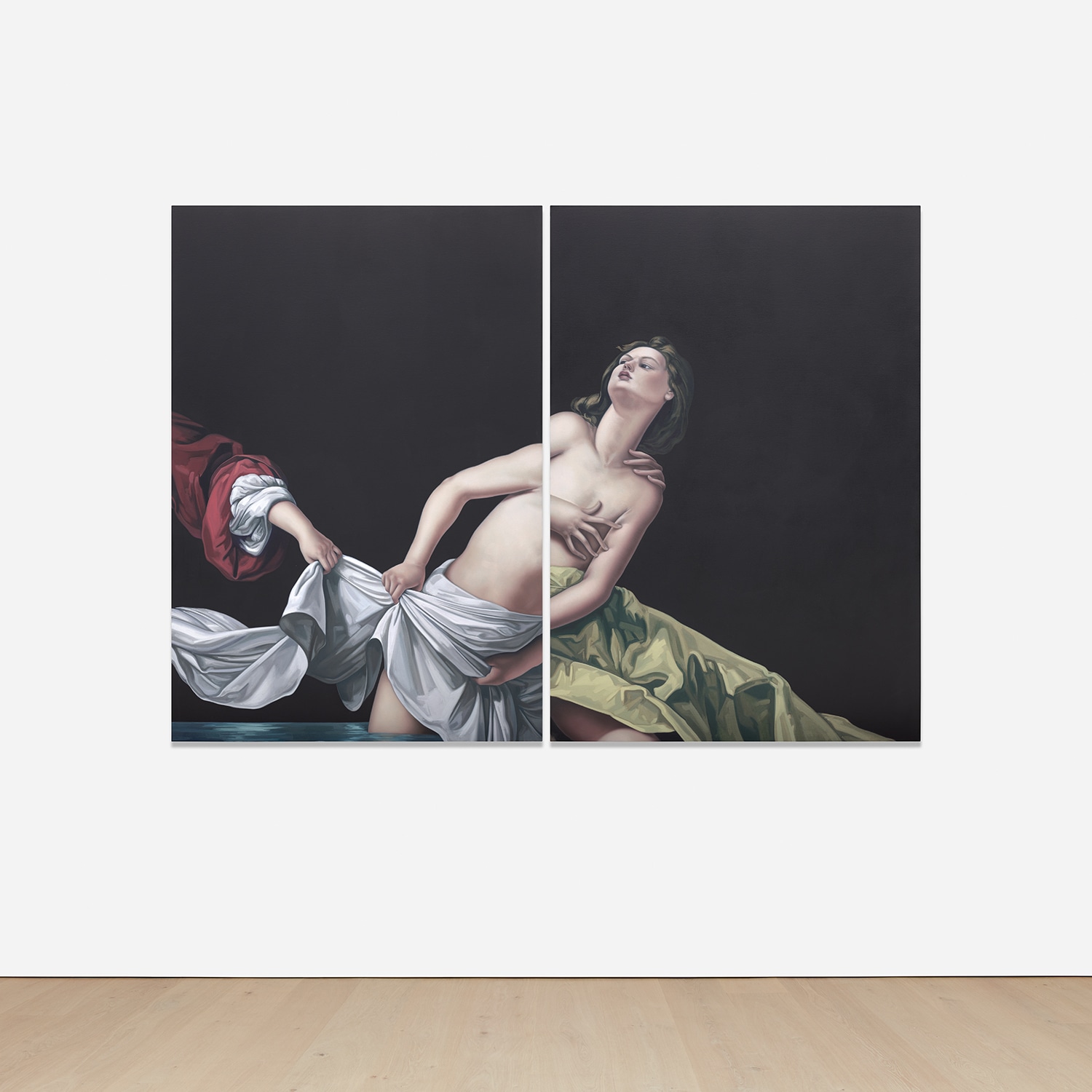



6
Jesse Mockrin
A Cymbal Crashed and Roaring Horns
- Estimate
- £60,000 - 80,000‡
£120,650
Lot Details
oil on linen, diptych
signed and dated 'J Mockrin 2017' on the reverse of the right part
each 132 x 92 cm (51 7/8 x 36 1/4 in.)
overall 132 x 184 cm (51 7/8 x 72 1/2 in.)
overall 132 x 184 cm (51 7/8 x 72 1/2 in.)
Painted in 2017.
Specialist